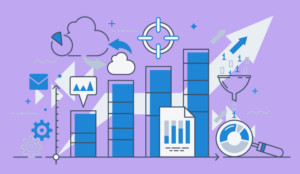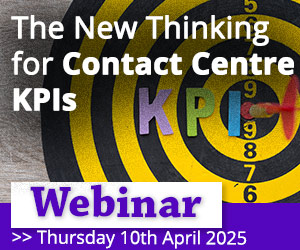In business, data is fast becoming the new oil. While this is true across all parts of the organisation it is particularly relevant within customer service.
Companies now have access to huge data volumes about their customers, the employees who interact with them, and supporting processes. Even analogue information (such as voice telephone calls), can now easily be digitised and analysed.
1. Understanding the Benefits of Analytics
By combining AI and real-time analysis, businesses now have the potential to collect and analyse enormous volumes of information. They can use it to make better decisions, as long as they do this in line with data protection, security and privacy regulations such as GDPR.
Adoption is increasing rapidly. Over 80% of decision makers interviewed for ContactBabel’s UK Customer Experience Decision-Makers’ Guide 2021-22 rated data analytics either very or somewhat useful for improving the customer experience.
Improving the Customer Journey
Over 7 in 10 (71%) said that data analytics was very useful for identifying business process failures and 68% for assisting with customer journey analytics. 59% said it helped them identify opportunities for self-service.
These examples all help improve customer experience by highlighting and then solving issues within the overall customer journey.
Ensuring Quality
69% say data analytics is very useful for checking the quality of customer interactions. This can include using real-time speech analytics to highlight when calls are not going well so that supervisors can step in to provide instant feedback or support.
This is just one way that data analytics can help to ensure that service levels are consistently high across every interaction and agent.
Enabling New Revenues and Greater Loyalty
By analysing customer service interactions and questions, data analytics can also spot opportunities to introduce new products and services as well as improving customer retention. Two-thirds (66%) of decision makers use data analytics to identify dissatisfied customers who might be at risk of churn.
By using it to analyse agent performance, highlighting best practice, and identifying areas for improvement, it can also be useful for training and coaching advisors.
2. Understanding the Types of Customer Service Data
Within customer service and customer experience, there are two main types of data available for analytics: Voice of the Employee (VoE) and Voice of the Customer (VoC).
Voice of the Employee data
As the name suggests, VoE data consists of direct feedback from employees, including, for example, regular employee surveys. These can cover overall wellbeing, areas to be improved, and how well technology and other types of support are helping.
However, it also includes analysis of interactions (such as calls, email answers, questions they have typed into knowledge bases).
Use these to identify opportunities for personal development and coaching – either in real-time or as part of ongoing performance reviews. In fact, within the ContactBabel report, 74% of companies said this interaction analytics had a positive impact on customer experience.
VoE can help to track and ensure that different agents and channels deliver a consistent level of service quality.
In addition, they can help to improve processes and access to information. For example, if lots of agents are searching for the same information in the knowledge base and a high proportion say it is insufficient, analysis can raise a red flag that more relevant answers are needed about those topics.
Voice of the Customer
There are multiple ways in which data analytics can be helpful to draw insights from VoC data. For example, 9.4% of customer calls to contact centres are complaints. Analysing these using emotion detection, sentiment analysis and speech analytics can help to identify the reasons behind these calls.
Similarly, you can use analytics to extract learnings from the many types of customer survey/feedback data that companies collect today. This includes surveys conducted by email (used by 35% of respondents), live agents (23%), by IVR (15%) and SMS (8%).
Importantly, to analyse and understand the complete Voice of the Customer, it’s essential to go beyond simply focusing on customer feedback data or Net Promoter Scores to understanding WHY people feel the way they do.
The best way to do this is to perform data analytics on customer conversations across all channels and to use this to deliver real-time actionable insights that can then feed back into your strategy and processes.
Data analytics is vital to maximising the benefits gained from the growing volumes of customer information within your contact centre. Data analytics techniques can identify opportunities to improve the customer experience.
Moreover, they can track and increase customer service performance and efficiency while highlighting areas for staff development and coaching.
This blog post has been re-published by kind permission of Enghouse Interactive – View the Original Article
For more information about Enghouse Interactive - visit the Enghouse Interactive Website
Call Centre Helper is not responsible for the content of these guest blog posts. The opinions expressed in this article are those of the author, and do not necessarily reflect those of Call Centre Helper.
Author: Enghouse Interactive
Published On: 17th Jan 2022
Read more about - Guest Blogs, Enghouse Interactive






 Enghouse Interactive delivers technology and expertise to help bring your customers closer to your business through its wide range of customer contact solutions.
Enghouse Interactive delivers technology and expertise to help bring your customers closer to your business through its wide range of customer contact solutions. 




























